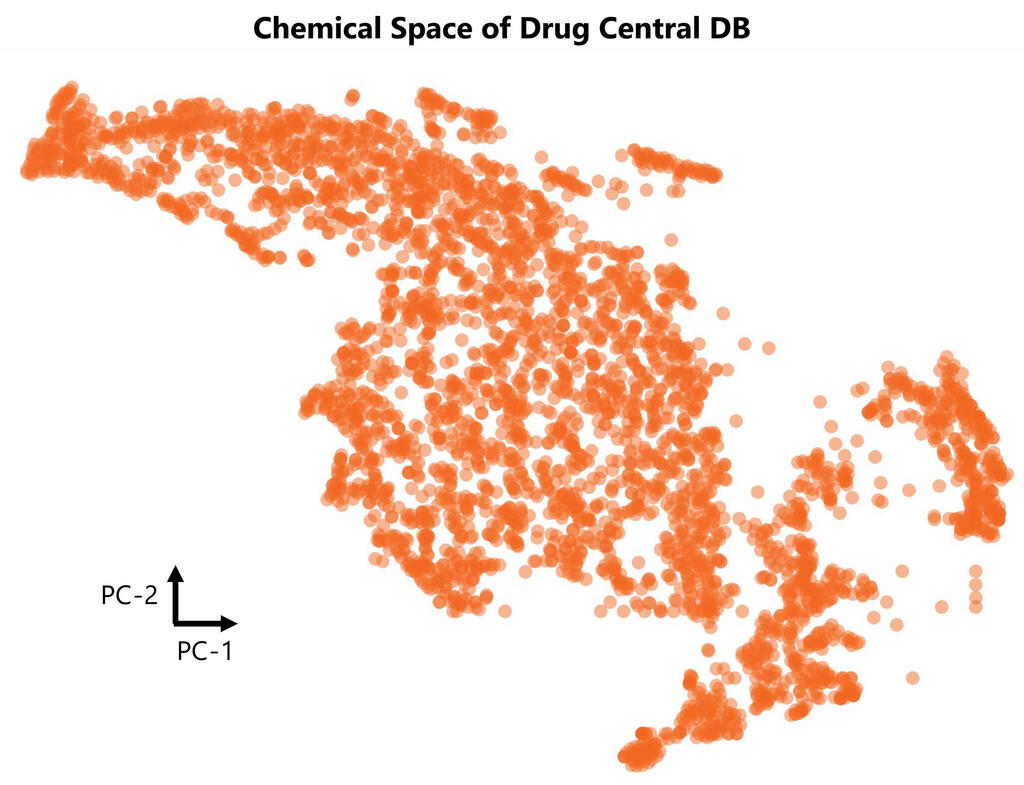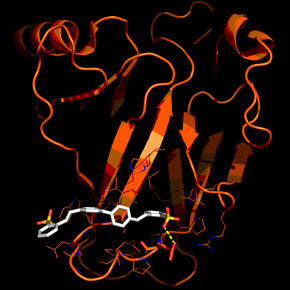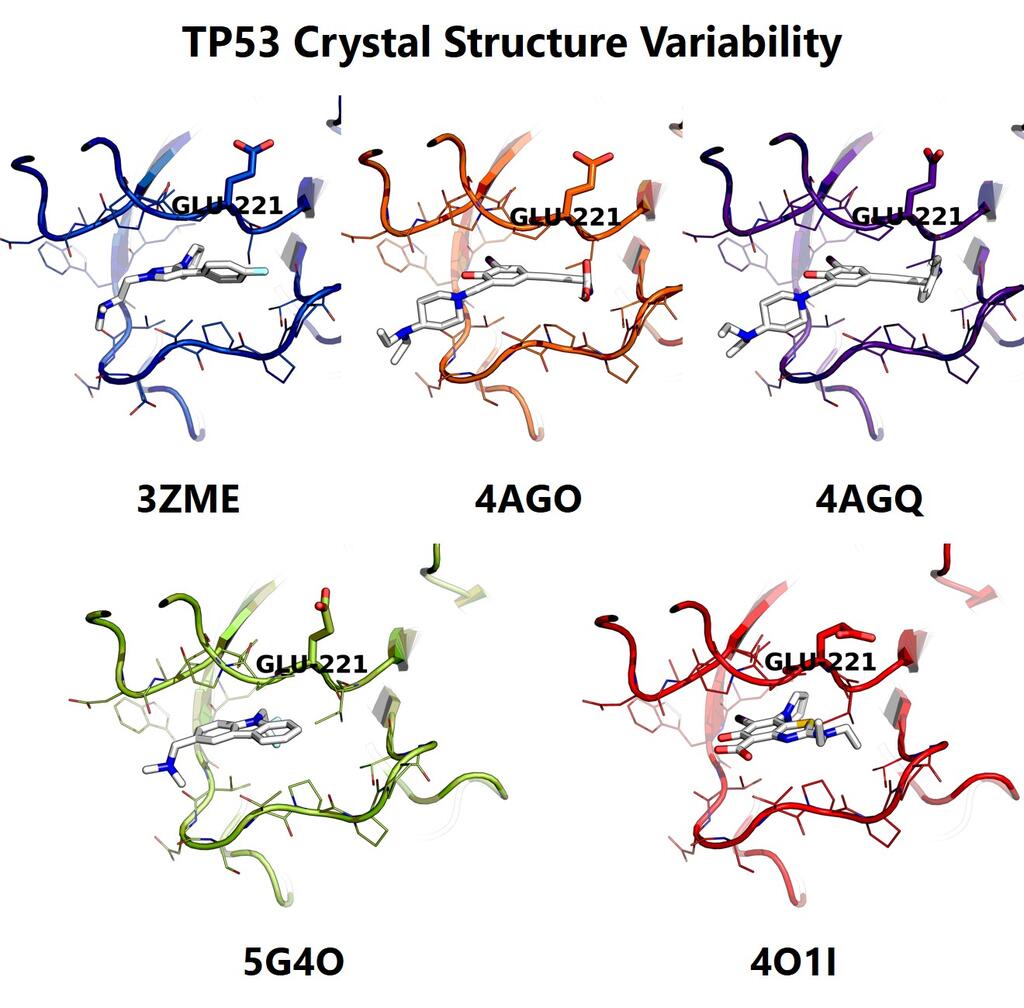Structure-based drug design (SBDD) explores the interaction of chemical compounds with protein structures to identify potential drug treatments for various diseases. SBDD and computer-aided drug design (CADD) are employed to predict how molecules (ligands) may bind with proteins. Southwest Research Institute (SwRI) integrates medicinal chemistry datasets to refine our protein-ligand models to enable accurate predictions of docking simulations. SwRI’s SBDD solutions include computational software as a service (SaaS), synthetic expertise, process development and analytical methods to help clients design and optimize drug candidates in our independent, FDA-inspected laboratories.
Computer-aided Drug Design Services

Chemical space of approved drugs (n=3,983) rendered by principal components analysis.
Through powerful CADD tools, our chemists evaluate millions of compounds with structure-based virtual screening and ligand-based drug design to find potential treatments.
- Rhodium™ Molecular Docking Software – SwRI’s Rhodium platform provides high-throughput virtual screening (HT-VS) with 3D analysis, efficiently selecting ligands to predict how a compound interacts with the protein structure.
- Machine Learning – Interpret rank order analysis of results for appropriate ML architecture for reliable predictions.
- Pharmacophore Modeling – In the absence of detailed protein crystal structure data, small but rich bioactivity datasets of an analog series can provide valuable insights for lead optimization and early drug discovery projects.
- HPC Compatible – Rhodium can be executed on client high-performance computing (HPC)environments to run massive simulations.

Rhodium™ Molecular Docking Software
Learn how SwRI trained its Rhodium Molecular Docking Software to ensure accuracy when evaluating millions of potential drug compounds.
Hit-to-Lead Drug Discovery Services

Tumor suppressor gene (TP53) case study with crystal structure (Xtal) in virtual experiment.
Early drug discovery often begins with identifying small molecule “hits” with promising therapeutic potential. Hits that result in lead generation will enter the lead optimization (LO) process, and refinement of potency, selectivity and safety are evaluated using biological assays and analytical methods. SwRI’s hit-to-lead drug discovery and optimization services include high-throughput virtual screening (HT-VS) with computational methods and selection of appropriate laboratory assessments.
- Medicinal Chemistry – Synthetic services, analog synthesis, structure-activity relationship (SAR) studies, salt screening, stability testing and more.
- Drug Discovery Research – Services across the drug discovery lifecycle.
- Biochemistry & Bioengineering – Assays, cell-based methodologies and biologics manufacturing.
Protein Structure Analysis
SwRI offers protein structure analysis expertise in the digital analysis of 3D structure data of large biomolecules including proteins and DNA. Investigating biological macromolecules fuels our hypothesis-driven drug discovery efforts to enable significant advancements accelerated by machine learning and artificial intelligence methods. SwRI chemists employ systematic procedures for the digital protein preparation process to achieve unbiased insight into the potential binding sites of biomolecule structures.
- X-ray structures are the preferred input for Rhodium molecular docking simulations.
- Cryo-EM structure-based drug design shows promise at high resolutions (< 3.2 Å).
- NMR structures are not appropriate for Rhodium molecular docking simulations.
Related Services
Find more structure-based drug design and drug discovery services:


